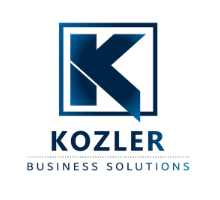18 ways to improve cash flow in your business
October 26, 2021

Cash is the most important resource you have to manage in your business. A business can go years without a profit but not a day without cash. You need to make sure that your business has a reliable internal stream of cash and is not consistently relying on debt or funding to operate. Just like a rocket burns fuel to take off, a business needs cash to grow.
Without further ado, let's look at 18 ways to improve your cash flow.
1. Know your numbers
It's imperative that you know your numbers because you can’t manage what you can’t measure. Even if numbers aren't your strong point. If you want to run a successful business, you need to know what's going on with the numbers. Get help if you need. Use your accounting software to find your cash flow statements. Then you can begin to make adjustments to improve your cash flow.
2. Get paid earlier
Offering discounts for early payment is a method many businesses use to improve cash flow. You can also adjust your payment terms with customers. Ideally you want this to be between 7 to 21 days. It's important to send out your invoices immediately to ensure you get paid as soon as possible. Accounting software such as Quickbooks, Xero or MYOB can help you with this. The systems will usually send out automatic reminders, however if a customer is late paying, it's important to follow up regularly. Consider applying penalties for consistently late payers.
3. Pay later
Find a way to pay later, if you can. Renegotiate credit terms with your suppliers to see if you can increase to 30 or 60 days. Having a good rapport with the supplier will help you in this regard. If it really comes down to the crunch, you will have to decide who you will pay late.
4. Lease don't buy
When you need new equipment or assets, see if you can lease it instead of buying it. That will help smooth out cash flow, rather than taking a big hit all at once. Also making it easier to upgrade your equipment regularly. Additionally many companies that lease equipment often offer service agreements and add-ons that can make your life easier if your equipment breaks down.
5. Conduct credit checks
This is commonplace in some industries. If it works for you, it certainly can be worth the time and effort. Ensure you comply with local laws and regulations and you will also need to get permission from prospective clients.
6. Increase your prices 
When was the last time you increased your prices? Are your prices comparable to the increase in expenses and wages? It’s inevitable that you will need to increase your prices eventually. Your loyal customers will understand.
7. Consolidate or renegotiate debt
Can you chat with the bank to consolidate or renegotiate the terms of your loans? It's worth the discussion to see if you can reduce some costs there.
8. Negotiate bulk discounts with suppliers
If you have stock that you know moves fast, you could consider negotiating a bulk discount with the supplier. Only do it if you can be certain the stock will move quickly, or you could be stuck with it, negatively impacting your cash flow.
9. Manage inventory
There are a variety of methods to manage your inventory with cash flow in mind. Some businesses use
the just in time (JIT) approach. Which involves holding as little stock as possible to avoid stockpiles and large warehouse costs. While it has positive benefits for cashflow it can leave a business vulnerable to supply chain disruptions or increased demand. We experienced examples of this during the pandemic as a result of panic buying and supply chain disruptions due to public health measures. Other inventory management measures included dropshipping, consignment and cross-docking. Finding what works best for your business is the key to effectively managing your inventory.
10. Cutting costs
Take a look at where you can cut costs. Ring around to your utility suppliers and see if you can get a better deal on your services. Most are willing to do something to keep you as a customer.
11. High interest accounts

Check to see if your bank accounts are earning a healthy amount of interest. Consider switching to a high interest account, allowing you to take advantage of compounding interest. Chat to your bank to find what options are right for your business.
12. Use electronic payments
Using electronic payment options allows you to pay an invoice the day before or sometimes even on the day it's due.
13. Ask for a deposit on high volume orders or lengthy projects
This a good practise for businesses who work on projects that span over many months such as a website developer. Or for businesses that sell large amounts of stock at once.
14. Offer different payment options
Making it easier for your customers to pay you is a simple way to improve cash flow. Offer a variety of payment methods including direct debit, BPAY and EFTPOS. If possible, try to phase out payment methods that take time to clear such as cheques.
15. Sell unnecessary assets
Does your business have any assets that you could sell? Perhaps a spare vehicle that is seldomly used. Or equipment that was once used but now collects dust. If it isn't directly contributing to revenue it could be worth selling it to boost cash. Obviously this is a short term solution but it can help you get out of a tight spot if needed.
16. Process and procedures
Are your internal processes and procedures slowing down your cash flow? Assess the time it takes to respond to enquiries and deliver your service. Changes could be made to speed up these processes, thus reducing the time it takes to close a sale and improve cash flow.
17. Outsource
Outsourcing is an option for a variety of services including maintenance, cleaning, IT, marketing and even strategy development. Having an outside team can not only be cheaper but it can bring a fresh perspective to your business.
18. Invoice factoring
Invoice factoring involves the selling of some or all of your accounts receivable to a third party factoring company. They will pay you immediately and it is their responsibility to chase your clients for payment. There are many advantages and disadvantages to invoice factoring. Namely, you can smooth out cash flow in your business. However, you will need to pay for the privilege of this service thus reducing your total revenue. Crunch the numbers and talk to your accountant or financial advisor to determine if invoice factoring is an option for your business.
As we mentioned, cash fuels businesses growth. Ensuring you have a consistent stream of it will protect your business in the short and long term. Which of these methods would you like to implement or which ones are helping your business the most?
To find out other ways to grow your business, check out our Business Success Map. A free resource (no email address required) that is designed to help business owners work on the right things at the right time.

%20(3).png?width=1080&height=1620&name=Copy%20of%20Business%20success%20mapGrowth%20exploration%20Story%20ads%20(1080%20x%201620%20px)%20(3).png)
